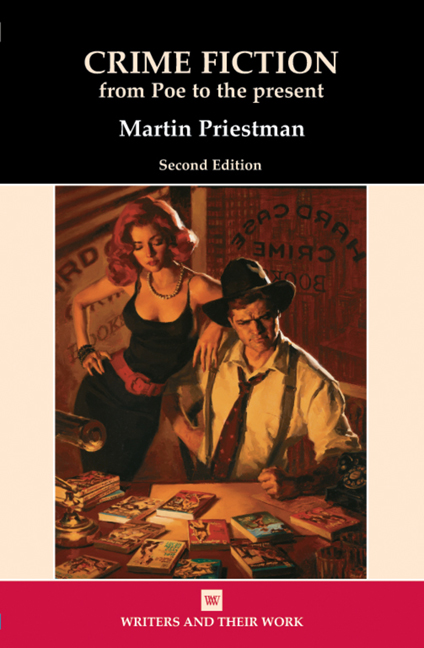Book contents
- Frontmatter
- Contents
- Acknowledgements
- A Chronology
- Introduction
- 1 The Detective Whodunnit from Poe to the First World War
- 2 The Detective Whodunnit from Christie to the Present
- 3 The Noir Thriller
- 4 The Hero-Thriller
- 5 Private Eyes: The Detective Thriller
- 6 Serial-killer Fiction and Other Developments
- Conclusion
- Notes
- Select Bibliography
- Index
3 - The Noir Thriller
- Frontmatter
- Contents
- Acknowledgements
- A Chronology
- Introduction
- 1 The Detective Whodunnit from Poe to the First World War
- 2 The Detective Whodunnit from Christie to the Present
- 3 The Noir Thriller
- 4 The Hero-Thriller
- 5 Private Eyes: The Detective Thriller
- 6 Serial-killer Fiction and Other Developments
- Conclusion
- Notes
- Select Bibliography
- Index
Summary
The thriller, where the action is primarily in the present tense and the protagonists are threatened by powerful forces of some kind, has two distinct branches. First, there is the noir thriller, where we identify with protagonists who consciously exceed the law. This group extends from classical tragedy to ambivalent celebrations of criminal milieux to more individualized studies of transgression. Second, there is the hero-thriller, where the protagonists confront a powerful conspiracy of wrongdoers without the guaranteed support of the forces of law and order. This group includes most spy fiction as well as much adventure fiction in which heroes match their powers against villains, and will be discussed in the next chapter.
The narrative which follows the exploits of a criminal in the present tense goes back at least to such tragedies as Richard III and Macbeth, and such early novels as Defoe's Moll Flanders, Colonel Jack and Roxana. Defoe's novels themselves rise out of an eighteenth-century culture with a highly ambiguous attitude to crime, where on the one hand public executions and the criminals’ penitent confession of wrongdoing were aspects of popular entertainment, but on the other hand the same criminals were often perceived as heroes, especially under a penal code so savagely sweeping yet inefficient that ‘there but for the grace of God go I’ must have been a very common feeling. Defoe's sometimes bewildering mixture of understanding and condemnation towards his protagonists is also evident in his reporting of the lives of such real-life criminals as Jack Sheppard and Jonathan Wild, two figures who remained the star-turns of the various compilations of criminal lives known collectively as The Newgate Calendar.
A century later, in the 1830s, novelists such as Harrison Ainsworth and Edward Bulwer-Lytton shaped such ambivalent feelings, and much of the same material, into a semi-fictionalized form recognizably similar to the modern thriller: the Newgate novel. Ainsworth's Jack Sheppard: A Romance of the Robber-Hero (1839) mixes a somewhat conventional romance-plot, hinging on noble birthrights and long-lost cousins, with painstakingly researched accounts of the exploits of the housebreaker Jack Sheppard and his nemesis, the thieftaker-gangster Jonathan Wild.
- Type
- Chapter
- Information
- Crime Fictionfrom Poe to the present, pp. 33 - 42Publisher: Liverpool University PressPrint publication year: 2013

